Harold Colquhoun And George Gilmore Collection
By Lynn Meyers, Specialist Librarian, Queensland Memory | 9 January 2017
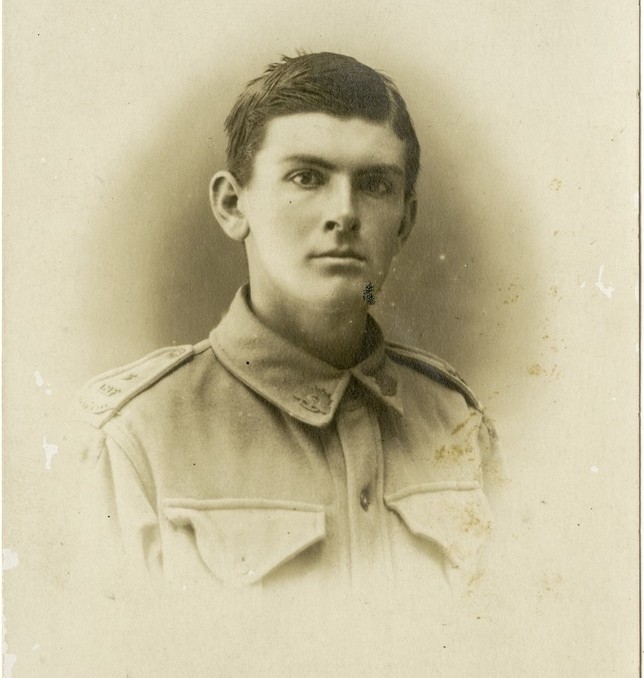
Studio portrait of Harold Colquhoun, 15th Infantry Battalion. Source: 30580, Harold Robert Colquhoun and George Foulds Gilmore collection, State Library of Queensland.
Readers of our blogs will remember a previous story about Sergeant Harold Robert Colquhoun, a young soldier from Mareeba who was killed at Gallipoli. Copies of Harold's letters are held at the Mareeba Heritage Museum. The original letters, photographs and ephemera relating to Harold and the Colquhoun family are now held by the John Oxley Library donated by a descendant and are available online.
Harold Colquhoun (1896-1915)
Harold was born in Fremantle, WA, to Robert Colquhoun, a mining engineer, and Marianne Matthews. Harold was educated at Scotch College in Perth, and later, when the family moved to Queensland, at Rockhampton Grammar School. He then obtained employment as a teacher at the Leichhardt Ward State School in Rockhampton.
Harold enlisted on 23 September 1914 and was assigned to the 15th Infantry Battalion, B Company. After training at the Enoggera Military Camp in Brisbane and then at Broadmeadows Camp in Melbourne, Harold embarked on the transport ship Ceramic on 22 December 1914 bound for Egypt.
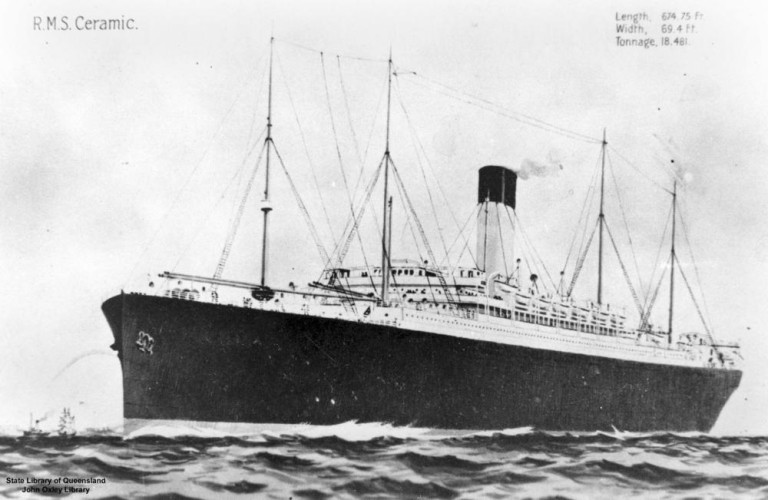
R.M.S. Ceramic, copied from a postcard, the back of which is signed by members of the 26th Infantry Battalion. Source: John Oxley Library, Negative 55029.
Harold survived the first landing at Gallipoli on the 25 April 1915, but on 29 May was shot through the lung during a bayonet charge at Quinn’s Post. Although the wound was serious and he was described as being 'dangerously ill' Harold recovered in a military hospital in Egypt, writing the following letter to his father on 24 July.
Dear Dad, It seems quite a long time since I got a letter from any of you at home. They must all be at the Peninsular for me when I return. My wound has healed alright by now, but my lungs are weakened, and I'm afraid that it will be some time before they will regain their old strength. It will be at the least 3 weeks before I get back to Gallipoli. News is very scarce and unreliable, we are all anxiously watching & waiting for Achi Baba to fall. Well I must close now. Best love to all at home including yourself. Harold. (Source: Item 30: 30580)
He returned to Gallipoli on the 25th August and was killed in action two days later during a failed attempt to take Hill 60 during which the Australians suffered severe casualties. One eyewitness stated that he was shot through the body and, as the position was exposed to enemy fire, he could not be recovered. His body was never found. After almost a year of uncertainty and anxious waiting for the family, his death was confirmed at a court of enquiry held at Serapeum, Egypt, on 6th April 1916. To make matters worse his family received unconfirmed reports that Harold had been seen in England, however upon investigation this was found to be another soldier with the same surname. Harold is commemorated on the Lone Pine Memorial at Gallipoli.
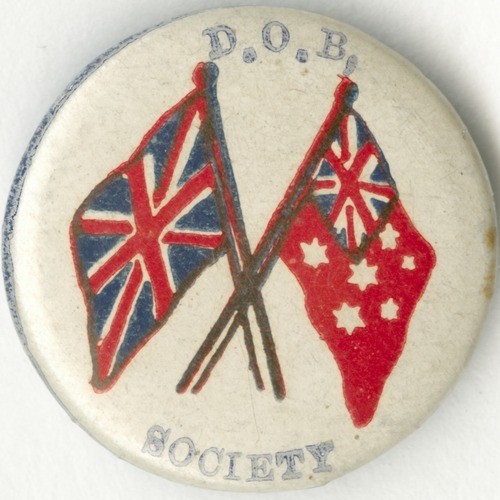
Badge relating to the D.O.B. Society (Doing Our Bit) Source: Item 86: 30580, Harold Robert Colquhoun and George Foulds Gilmore collection, State Library of Queensland.
Harold's sisters and parents were very involved in the war effort in Mareeba. In 1915 his father, Robert Duncan Colquhoun, was the president of the D.O.B. (Doing Our Best Society) which was established in Mareeba in July 1915 to raise funds for local men serving in the war and to care for wounded returned soldiers. The small D.O.B. Badge above is part of the collection.
The collection also includes a coloured hand-drawn poster for the comic opera "H.M.S. Pinafore" which was staged in Mareeba on 28 October 1915 to raise money for Christmas gifts for the troops at Gallipoli. The poster was probably created by Harold Colquhoun's sisters, Minna (Muriel), Flora and Dorothy, who appeared in the production. Their mother, Isabel, was the pianist and organiser of the event, and was frequently involved in musical activities to raise money for the war effort.
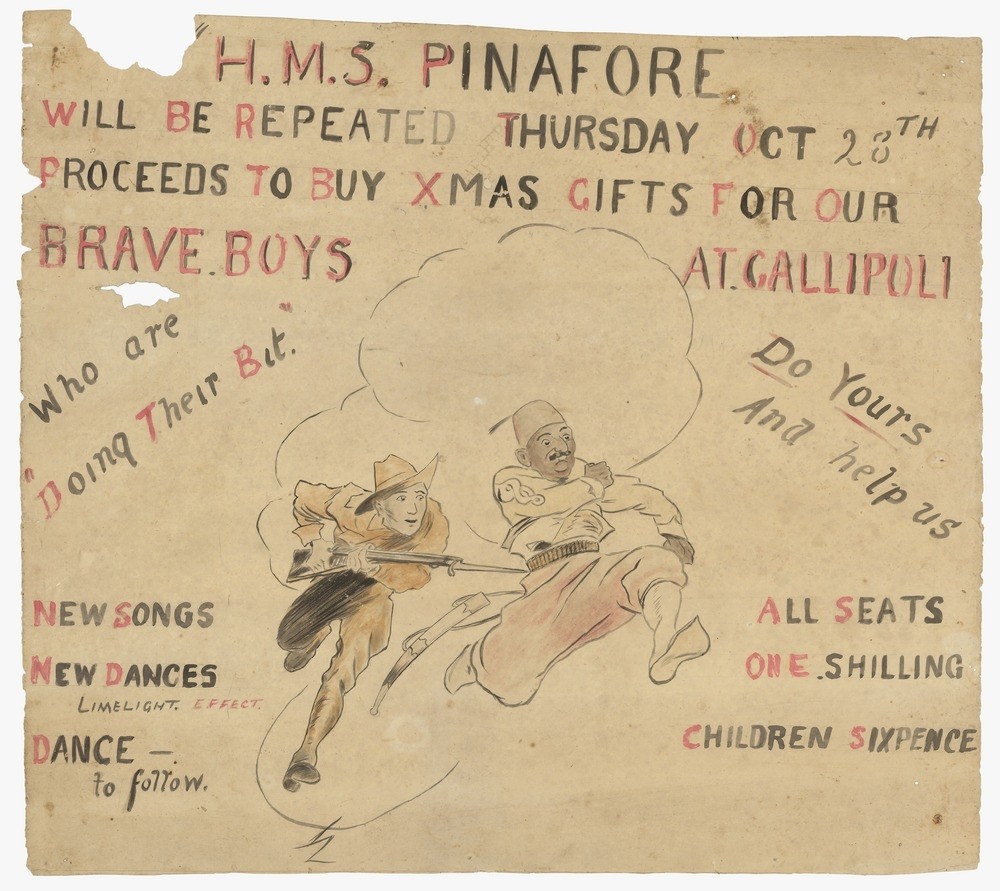
Coloured hand-drawn poster for the comic opera "H.M.S. Pinafore" which was staged in Mareeba on 28 October 1915. Source: Item 90: 30580, Harold Robert Colquhoun and George Foulds Gilmore collection, State Library of Queensland.
Included in the collection is a small leather wallet containing photographs and ephemera belonging to another soldier: Sapper George Foulds Gilmore, of the Field Company Engineers. In 1922 George Gilmore married Muriel (Minna) Colquhoun, the sister of Harold Colquhoun.
George Gilmore (1897-1970)
George was born in Toowong, Brisbane, and at the time of his enlistment, 19 June 1917, he was a 19 year old fitter living at Wolfram Camp, near Cairns. He was assigned as a sapper to the Field Company Engineers, January to October, 1917, Reinforcements and embarked from Sydney on the S.S. Canberra on 16 November 1917. After arriving in England, George travelled to the Australian Engineers Training Depot on the east coast of England at Brightlingsea in Essex. This depot housed up to 10,000 Australian and New Zealand troops between 1916 and 1919, and due to the tidal creeks in the area, was perfect for training in bridge-building and trench digging in the soft soils and mud.
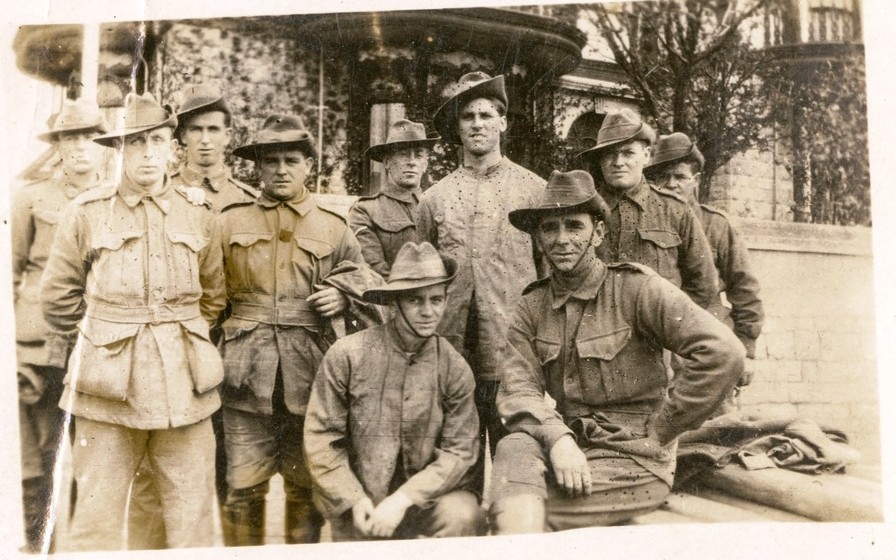
Australian troops at Brightlingsea, England, 10 May 1918. Source: Item 95: 30580, Harold Robert Colquhoun and George Foulds Gilmore collection, State Library of Queensland.
On 2 July 1918 George proceeded overseas to France to join the 6th Field Company Engineers at the front, where he served until the Armistice in November. In February 1919 he was transferred to the 23rd Battalion and promoted to sergeant, before working as an instructor of motor mechanics, training Australian troops, at the Universitie-du-Trevail in Charleroi, Belgium. He returned to Australia in December 1919.
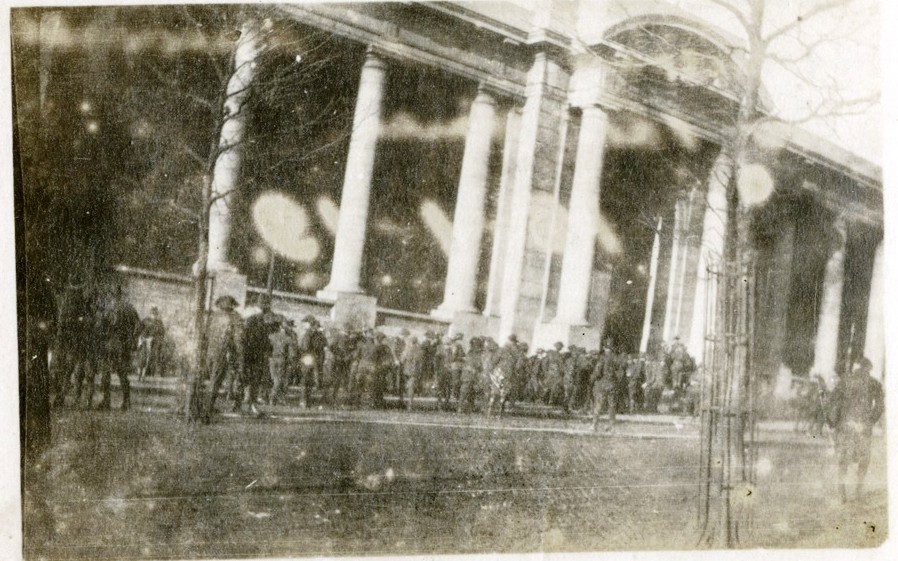
Australian soldiers outside the Universitie-du-Trevail in Charleroi, France, where they were studying, 15 January 1919. Source: Item 99: 30580, Harold Robert Colquhoun and George Foulds Gilmore collection, State Library of Queensland
After the war George returned to Cairns and was employed as a fitter, before establishing his own engineering firm, Gilmore & Cadlolo in 1930. He and Minna had two children, Dorothy and Ian. Muriel died in 1940 and George married Lydia Grace McPherson in 1944. During World War II he served as a warrant officer with the Citizen Military Forces and was in charge of an engineering workshop manufacturing search lights in Brisbane. In 1950 George was elected president of the Far Northern District Returned Sailor's Soldier's Airmen's Imperial League. He died on the 25 July 1970 in Cairns.
The collection may be viewed at the John Oxley Library or online.
Read more ...
30580, Harold Robert Colquhoun and George Foulds Gilmore collection, State Library of Queensland
- Service record: COLQUHOUN, Harold Robert
- Embarkation roll: Harold Colquhoun, 15 Infantry Battalion (December 1914)
- Red Cross Wounded and Missing Files: Harold Robert Lyne Colquhoun
- Commonwealth War Graves Commission
Service record: GILMOURE, George Foulds
Comments
Your email address will not be published.
We welcome relevant, respectful comments.